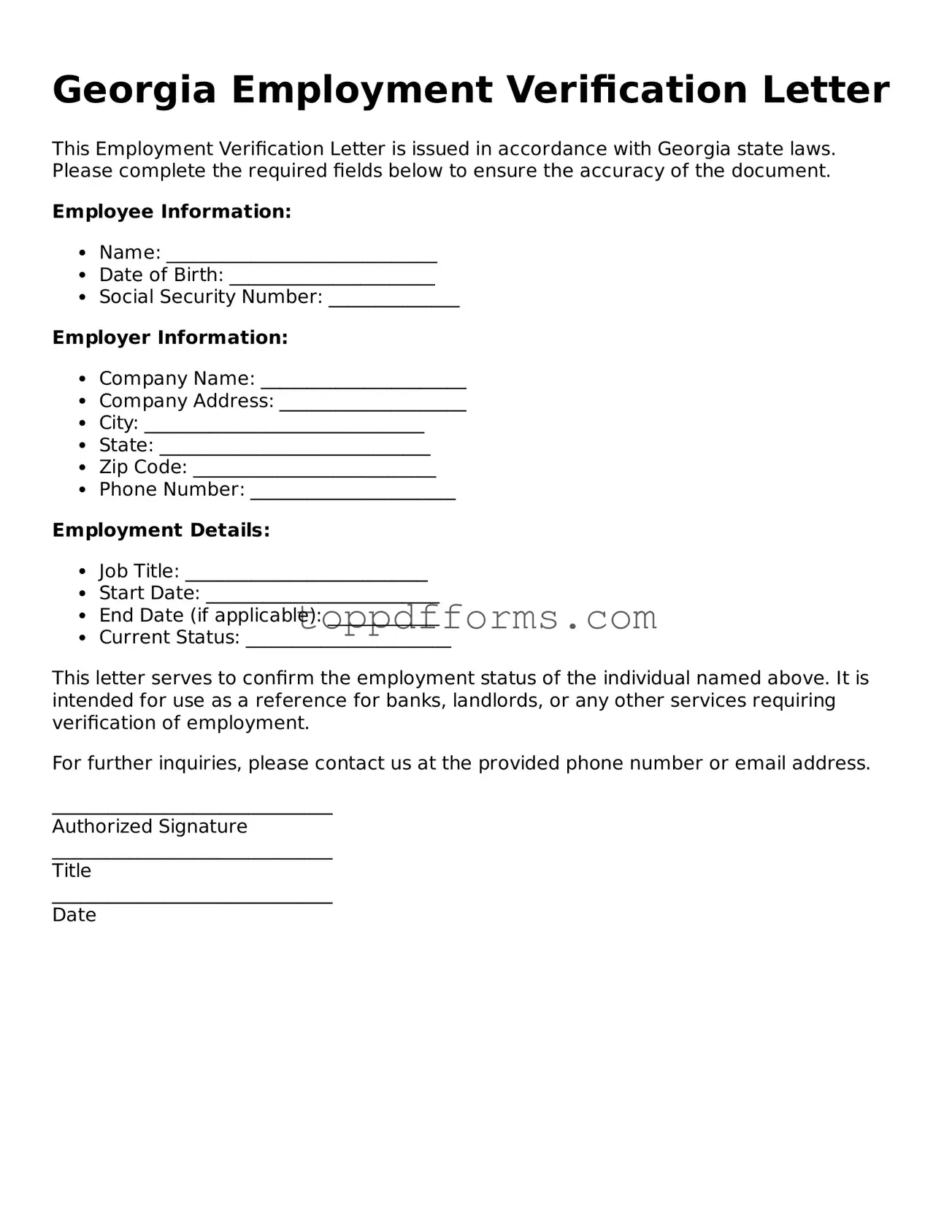Filling out the Georgia Employment Verification form can be a straightforward process, but many people make common mistakes that can lead to delays or complications. One frequent error is providing incorrect or outdated personal information. Ensure that names, addresses, and contact numbers are current. An incorrect phone number can hinder communication and verification.
Another mistake is failing to include all necessary documentation. The Employment Verification form often requires supporting documents, such as pay stubs or tax forms. Omitting these can result in a request for additional information, extending the verification process.
People sometimes overlook the importance of signing the form. A signature is crucial as it indicates consent for the verification process. Without it, the form may be considered incomplete, leading to further delays.
Inaccurate job titles or employment dates are also common pitfalls. Providing the wrong title or incorrect dates of employment can raise questions and complicate the verification process. Double-checking this information can save time and prevent misunderstandings.
Another mistake is failing to read the instructions carefully. Each section of the form may have specific requirements, and missing these can lead to errors. Taking the time to read the instructions can help ensure that everything is filled out correctly.
Some individuals neglect to include the employer’s contact information. This information is essential for the verification process, as it allows the verifying party to reach out directly to the employer. Missing this can stall the entire process.
Providing vague or unclear responses can also be an issue. It's important to be as specific as possible when answering questions on the form. Ambiguities can lead to further inquiries and delays.
Another common error is submitting the form without reviewing it. A quick review can catch typographical errors or omissions that might have been overlooked during the initial filling out. Taking a moment to proofread can make a significant difference.
Some individuals may also forget to keep a copy of the completed form for their records. Having a copy can be useful for future reference and can help if any questions arise later in the verification process.
Lastly, waiting too long to submit the form can be detrimental. The verification process may be time-sensitive, and delays in submission can affect job applications or other important matters. Timeliness is key to ensuring a smooth verification process.
